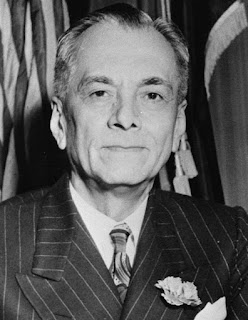During the Holocaust, the Philippines became a safe haven for some 1,200 Jewish refugees.
During the Holocaust, the Philippines became a safe haven for some 1,200 Jewish refugees.
In the 1930s, Manuel Quezon, the first president of the Philippines, felt increasing concern over the treatment of Jewish citizens in Nazi Germany. With the assistance of US High Commissioner for the Philippines, Paul V. McNutt, he adopted a policy that would turn the country into a sanctuary for those fleeing Nazi persecution.
Despite criticism, Quezon continued to facilitate Jewish immigration and encouraged Filipinos to welcome these refugees with open arms.
Lotte Hershfeld (pictured left) and her family fled from Germany to the Philippines in 1938. While the transition to life there wasn't easy (the Philippines' hot climate and language were especially challenging), Lotte learned to adapt.
When the Japanese occupied the Philippines in 1942, the refugees' lives were once again threatened. Despite the brutal conditions, Lotte and her family survived the war.
“We would not be alive today if not for the Philippines. We would’ve been destroyed in the crematorium," Lotte later told CNN.
Today, Quezon and his country are still remembered for their efforts during the Holocaust.During the Holocaust, the Philippines became a safe haven for some 1,200 Jewish refugees.
In the 1930s, Manuel Quezon, the first president of the Philippines, felt increasing concern over the treatment of Jewish citizens in Nazi Germany. With the assistance of US High Commissioner for the Philippines, Paul V. McNutt, he adopted a policy that would turn the country into a sanctuary for those fleeing Nazi persecution.
Despite criticism, Quezon continued to facilitate Jewish immigration and encouraged Filipinos to welcome these refugees with open arms.
Lotte Hershfeld (pictured left) and her family fled from Germany to the Philippines in 1938. While the transition to life there wasn't easy (the Philippines' hot climate and language were especially challenging), Lotte learned to adapt.
When the Japanese occupied the Philippines in 1942, the refugees' lives were once again threatened. Despite the brutal conditions, Lotte and her family survived the war.
“We would not be alive today if not for the Philippines. We would’ve been destroyed in the crematorium," Lotte later told CNN.
Today, Quezon and his country are still remembered for their efforts during the Holocaust.












Comments
Post a Comment